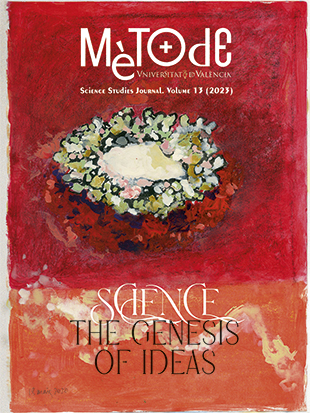Rashevsky’s dream: A physico-mathematical foundation of history and culture
DOI:
https://doi.org/10.7203/metode.13.21763Keywords:
psychohistory, cliodynamics, culturomics Abstract
Abstract
The popular science fiction series Foundation penned by Isaac Asimov explores the idea that the course of the future of societies is not only predictable but can be engineered as well. In Asimov’s fictional world, a multidisciplinary science called psychohistory combines mathematics, psychology, and history to predict future events. Nicolas Rashevsky, the father of mathematical biology, lent credibility to the existence of universal principles underpinning human cultural evolution using mathematical models. His vision remains to be fully realized, as our capacity to predict and even engineer is very fragmented. Two main obstacles are a misunderstanding of the role of mathematical models and the limitations of current datasets. Recent advances in complex systems research, computer-based simulations, and large-scale databases, are paving the way towards fully developing a mathematical theory of human history.
 Downloads
Downloads
 References
References
Asimov, I. (2010). Foundation: Foundation and empire; Second foundation. No. 332. Everyman’s Library.
Bak-Coleman, J. B., Alfano, M., Barfuss, W., Bergstrom, C. T., Centeno, M. A., Couzin, I. D., Donges, J. F., Galesic, M., Gersick, A. S., Jacquet, J., Kao, A. B., Moran, R. E., Romanczuk, P., Rubenstein, D. I., Tombak, K. J., Van Bavel, J. J., & Weber, E. U. (2021). Stewardship of global collective behavior. Proceedings of the National Academy of Sciences, 118(27), e2025764118. https://doi.org/10.1073/pnas.2025764118
Demandt, A. (1984). Der Fall Roms: Die Auflösung des römischen Reiches im Urteil der Nachwelt. Beck.
Michel, J. B., Shen, Y. K., Aiden, A. P., Veres, A., Gray, M. K., Google Books Team, Pickett, J. P., Hoiberg, D., Clancy, D., Norvig, P., Orwant, J., Pinker, S., Nowak, M. A., & Aiden, E. L. (2011). Quantitative analysis of culture using millions of digitized books. Science, 331(6014), 176–182. https://doi.org/10.1126/science.1199644
Moretti, F. (2013). Distant reading. Verso Books.
Prelec, D., Seung, H. S., & McCoy, J. (2017). A solution to the single-question crowd wisdom problem. Nature, 541(7638), 532–535. https://doi.org/10.1038/nature21054
Rashevsky, N. (1968). Looking at history through mathematics. MIT Press.
Spinney, L. (2016). History lessons. New Scientist, 232(3095), 38–41.
Taagepera, R. (1997). Expansion and contraction patterns of large polities: Context for Russia. International Studies Quarterly, 41(3), 475–504. https://doi.org/10.1111/0020-8833.00053
Turchin, P. (2005). War and peace and war: The life cycles of imperial nations. Pi.
Turchin, P., Brennan, R., Currie, T. E., Feeney, K. C., Francois, P., Hoyer, D., Manning, J., Marciniak, A., Mullins, D., Palmisano, A., Peregrine, P., Turner, E. A. L., & Whitehouse, H. (2015). Seshat: The global history databank. Cliodynamics: The Journal of Quantitative History and Cultural Evolution, 6(1), 77–107. https://doi.org/10.21237/C7clio6127917
Downloads
Published
How to Cite
-
Abstract1233
-
PDF693
-
(Español)5
Issue
Section
License
Copyright (c) 2023 CC BY SA

This work is licensed under a Creative Commons Attribution-ShareAlike 4.0 International License.
![]()
All the documents in the OJS platform are open access and property of their respective authors.
Authors publishing in the journal agree to the following terms:
- Authors keep the rights and guarantee Metode Science Studies Journal the right to be the first publication of the document, licensed under a Creative Commons Attribution-NonCommercial-NoDerivatives 4.0 International License that allows others to share the work with an acknowledgement of authorship and publication in the journal.
- Authors are allowed and encouraged to spread their work through electronic means using personal or institutional websites (institutional open archives, personal websites or professional and academic networks profiles) once the text has been published.





